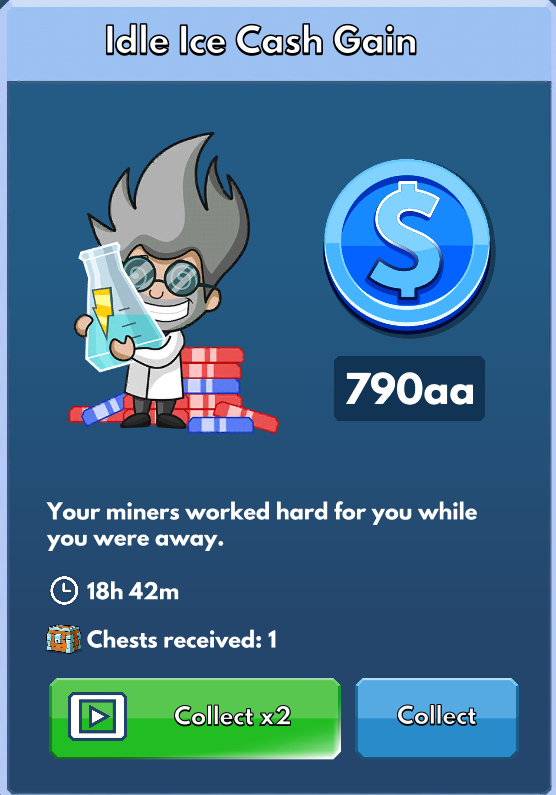· 10 min read
Designing Habit-Forming Games
Jacqueline Zenn
Content Crafter at GameAnalytics
We are all creatures of habit, whether we like it or not. Not every habit is bad – especially when you’re a developer who’s got players that make your game a regular habit or part of their everyday activities. After all, a player who gets used to playing your game will keep coming back to it, and that’s the key to forming a steady community of players in the long run.
[bctt tweet=”A player who gets used to playing your game habitually will keep coming back, and that’s the key to forming a steady community. Read more:” username=”GameAnalytics”]
Repeat Customers Are The Best Customers
This is the case in nearly every business, but especially true in gaming. After all, most users aren’t going to finish any game in a single session (and if they can, is that really the right path for your game?). Rather, a player who gets used to making your game part of their lives will keep coming back to it when they have a few free minutes, thus forming a habit and becoming a valuable member of your game’s community in the long run.
So how do you make your game into an enjoyable and positive habit for your players (and a lucrative one for you)?

Always Give Them A Reason To Return When They Have A Spare Moment
The gaming realm is getting more crowded every day, so always give players a reason to return and for your game to occupy time in their lives – even if it’s just because they are bored in line at Starbucks or waiting to pick up a takeaway meal.
In fact, the “Starbucks Test” is popular in marketing because it not only shows that a habit has been formed, but that habit is an easy one to live with. It’s described as a way for a player to start a session, play in a way that’s satisfying to them, and finish up in the same amount of time it takes to make and receive a Starbucks order.
Unless we’re talking about a seriously busy Starbucks, that’s about two minutes on average. This is why some amazingly successful mobile games rely on quick sessions or short feedback loops, meant to take up the time spent in line or awaiting one’s order at Starbucks – or checking out at the grocery store, waiting to pick up a takeaway meal, or similar short term “waiting in line” behaviors.
[bctt tweet=”Can players open up your game and make progress in the time it takes to get a coffee at Starbucks?” username=”GameAnalytics”]
That said, not every game works best in two minute rounds or loops. That’s why the commuter test is another way to identify the ideal length of a session – by making your game’s sessions something that’s ideal for the standard commute of your target audience, which is usually around twenty to thirty minutes.
Furthermore, you’ll want to ensure that your players feel like they’ve accomplished something during their sessions. By creating a positive feedback loop, they’ll feel productive, stay engaged, and eventually make your game a habit.

Never Make A Player Feel Like They’re Being Kicked Out
Even if a player has completed a session or loop, there should always be something to do in-game that keeps the player engaged and involved. If the user has a free twenty minutes or so like in the aforementioned “commuter test”, you want them to feel like playing your game is a good use of their time and that they can be productive in the sense of how much loot they gained, how many levels they completed, how many races or battles they’ve won, or other “personal success metrics” for players that your game possesses.
Building in accomplishments, achievements, or “wins” that make up your players feel like they’ve gotten something done during their downtime is key; that positive or productive feeling is one of the keys to ensuring that your players make your game a habit instead of an occasional diversion – or worse, a one-and-done and uninstall.
Making Downtime And Breaks Into Productive Gaming Time
This might be the key to success in regards to building a habit forming game, especially on mobile. Whenever your users have a few free minutes during the workday, or long commutes, or even are waiting in line at the bank or store, it’s a perfect time for them to collect loot, level up, or engage in a battle or race. However, that’s only if you make it easy for your players to start – and end – a quick session.
Ensuring that your game’s simple activities or quests are essentially bite-size playing sessions is one of the easiest ways to do this. If your game is something they can do while they have a spare two or three minutes (the aforementioned Starbucks test) and feel like they’ve accomplished something or made some progress in the game, your players are more likely use their downtime as game time.
Same thing applies to the “commute test” – crafting a narrative that allows for not only two minute “Starbucks Tests” but also longer twenty to thirty minute sessions helps your players form a habit because they feel like they can accomplishment something useful in-game during their downtime.

Easy To Open, Easy To Close
You want to make it as simple as possible for your players to start a session and get involved with your game, especially when it’s a mobile game, and chances are that your players are distracted by the environment around them (as opposed to a desktop game or console game where they’re more likely to settle in for a long session at home). Mobile players are on the go during their commutes, or out and about running errands, or perhaps at the office taking a few minutes for a quick break. The easy in, easy out concept makes for a habit-forming game.
With that in mind, it should be a snap to get into the game – no long loading screens or lead up – but also simple to close a session. This might seem counter-intuitive, but making short sessions seamless means that your players are more likely to fire up your game when they have a spare moment. Be sure that your game features activities that can be completed in a couple minutes – don’t fail the Starbucks test!
What’s more, you want a reason for your players to re-engage; anything that is easy to do and feels innately rewarding will likely become a habit.

A Quick Recap
- Always give your players a reason to pick up a session when they have a spare moment
- Never make a player feel like they’re being kicked out cause they don’t have a long time to play
- Each session should feel productive
- Easy launch, easy exit
[bctt tweet=”Make your mobile game one that people can habitually play for as long as it takes for them to finish their daily commute.” username=”GameAnalytics”]
Know That Your Players Will Be Distracted, And That’s Okay
You can pretty much always assume that your mobile players will be distracted by something when playing mobile games – and that’s okay! In fact, you should design the game around that – give your players enough reason to be compelled by the game but make it smooth and relaxed enough if that they can close it or pause it for a minute or two if they need to.
Managing their in-game flow state (think a mixture of relaxation or boredom, and anxiety that they might be missing out on something) is key. Remember that immersing oneself in a mobile game is still possible, it just takes on a different appearance than it does on a desktop or in console games.
A user needs to be able to exit or pause and come back to the game without a disruption in game play or flow. Your game will likely be more successful with a light or simple narrative, relatively uncomplex steps, and session lengths that lean more towards the “Starbucks Test” than the “Commuter Test”. After all, a user can always do a couple smaller/shorter activities in a row if they have more time than a few minutes.
Again, it’s all about creating that short and sweet positive feedback loop that keeps players engaged and coming back for more whenever they have some downtime or a few spare moments. Even if they are (and they often will be) distracted, you can use that to your advantage…

Using Distractions And Habit Formation To Your Advantage
Now that you understand that your players will be distracted but that you can encourage them to form habits around your game anyways, it’s time to use them to your monetization advantage. From how your ads are timed or the methods with which new loot is unlocked, know that you can arrange these around the two minute or the twenty minute limit – ideal timings for the Starbucks and commuter tests. Regularly starting new sessions as opposed to playing for hours may allow you to optimize for more opportunities for ads to load, generating an increased number of views or impressions, and therefore click-throughs.
What’s more, by timing the desirable activities around those timings, you’ll make your game their go-to option in the case they are stuck in traffic, in line, or otherwise looking for something to do – even if you know they’ll be distracted or taken away by something else soon. If you’re lucky, your game can be their habit or go-to when they’re taking a break, or need something to counteract short-term boredom!
Following Up And Rewarding Them Once They’ve Formed A Habit
Keep in mind that it typically takes a person around 66 days to form a habit, so your game probably won’t become a habitual go-to overnight. However, once they do, it’s important to monitor the more habitual behaviors and reward them – extra loot for logging in multiple times per day or multiple days in a row, more points for longer winning streaks, and things like that. You can also optimize your ads to hit according to the average session time.
Make your players’ habits a win for them – they can use your game to combat boredom and make them feel productive in typical downtime, you can give them rewards for their faithfulness and regular sessions – and you’ll win as a developer as well.